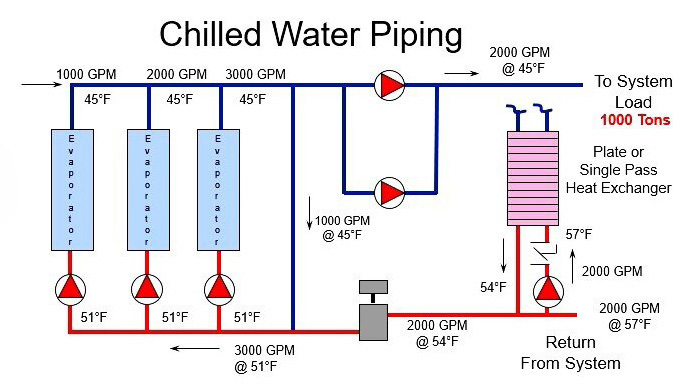How to Pipe Water Chiller?
Fri, Nov 25 by ATO.com
Air cooled water chiller is a water cooling equipment that can provide constant temperature, constant flow and constant pressure. The chiller is widely used in the industrial refrigeration process requiring chilled water, such as plastics, electroplating, electronics, chemical industry, pharmacy, printing, food processing, etc.
Many people in the purchase of the required industrial chiller, often ignore some basic aspects of the refrigeration unit water pipe in the installation and construction process. So, how to pipe the water chiller? ATO.com will introduce some steps for you.

- After leveling the unit, connecting the industrial water chiller pipe and cooling water pipe. Piping should have flexible parts and independently supportive capability to avoid any distortion or vibration. The pipe should be supported and correctly joined. Shock pad can be added to the pipe supporter so as to reduce the vibration.
- There are marks near the inlet and outlet for reference when connecting the pipe. It is necessary to connect the pipe according to the marks on the industrial air cooled water chiller.
- According to the general diagram, connect the pipe for cool water and cooling water (flange or clamping band connection), and set a filter in the inlet. Whether the pipe is horizontally or vertically led from the unit to the water pump is decided by the user based on the site condition.
- Manometer should be set on the inflow pipe and outflow pipe of the unit so as to measure the differential pressure of the inlet and outlet and thus estimate whether the water flow conforms to the rated water flow. The control valve of cool water and cooling water must be installed on the outflow pipe of the refrigerant unit to avoid disorder of the water flow as well as eroding the heat transfer tube near the inlet.
- When the water quality is bad, there will be much deposit such as scale and sand in the shell and tube exchanger, which will decrease the water flow and affect the rate of heat exchange. Meanwhile, if the quality of chilled water and cooling water is bad, it will not only cause scaling, affecting the rate of heat exchange and the performance of the unit, but also cause erosion of the heat exchange pipe which may lead to serious leak. Thus, the water must be filtered and softened by the water-softening equipment before flowing into the system. The in closed chilled water system should adopt soft water. Otherwise, the water must be treated. Currently the commonly used water treating device is sand eliminator and water softening equipment. If the water quality still can not reach the requirements, add a heat exchanger between the water on side of heat source and the air cooled water chiller. Actually, even if the above actions are taken, there will be deposit such as scale and sand in the shell and tube exchanger, which will decrease the water flow and affect the rate of heat exchange and even freeze the evaporator. Therefore, it is necessary to inspect and maintain the chiller periodically.

